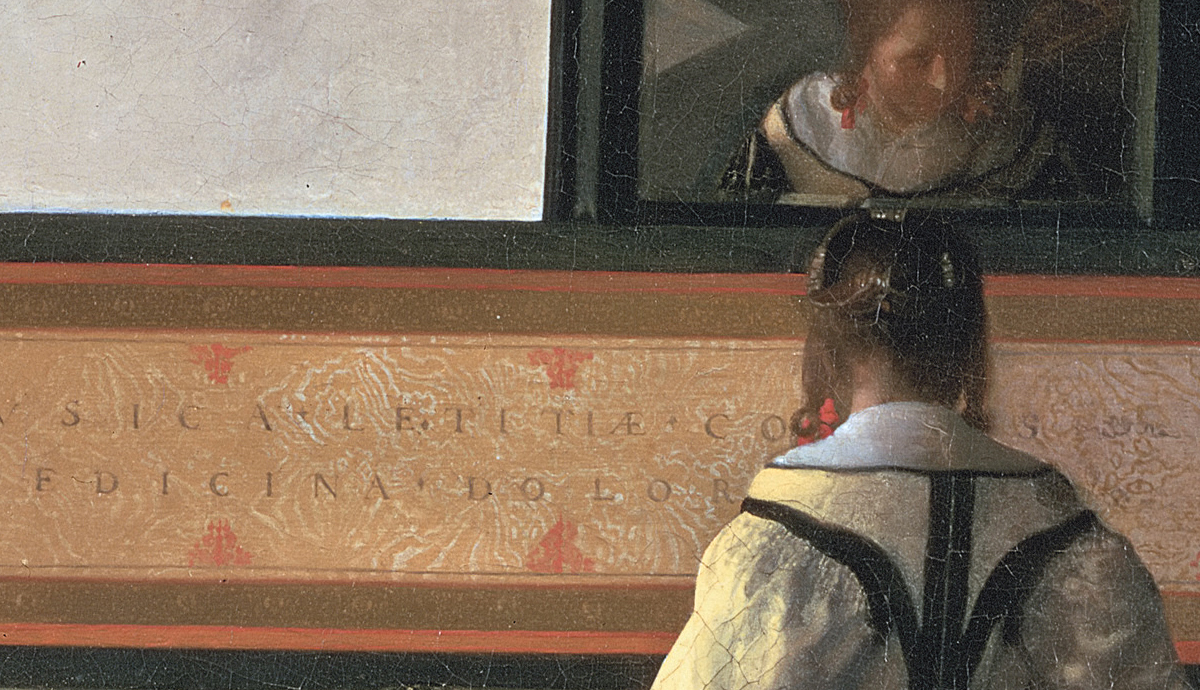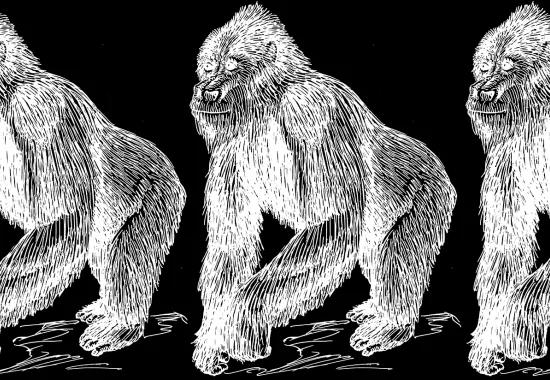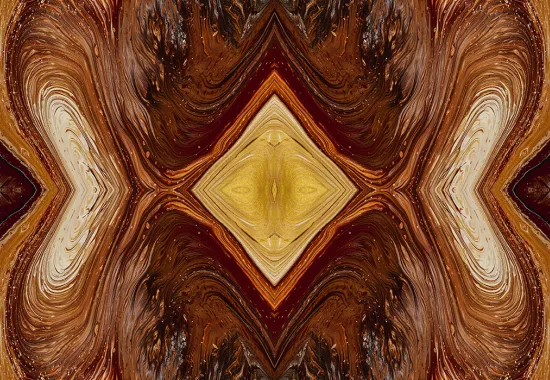The Resurgent Sonnet
The Music Lesson
As in a dream, the suitor listens raptly
while the young maid plays the virginals.
Flame-bright, blue as a Morpho butterfly,
a chair looms square in front—part sentinel,
part invitation. Lapis clarifies
the north light pouring through the leaded window,
crushed & mulled with linseed oil by his
own hand this morning. On the wall behind,
the black-framed mirror leans out toward the pair . . .
I zoom in on the opaque, watery details
just above the girl’s reflection, where
the artist reveals one leg of his easel—
as if telling us I am still here—
before he signs at bottom right: Vermeer.
The sonnet form was invented in the early 13th century by a Sicilian poet named Jacopo de Lentini, by combining two song quatrains with a sestet rhyming cdecde. A little later, the form we call Italian or Petrarchan, combining double envelope quatrains with a variously rhymed sestet was developed. Petrarch continues to shape our conception of the sonnet. Much of the sonnet’s reputation as a fancy love poem stems from him, though his real interest wasn’t in romance, per se, so much as in love in its ideal vs temporal forms; and as it figures in spiritual transcendence.
The version that we generally call English or Shakespearian we owe to Sir Thomas Wyatt, who brought the Petrarchan version back to England in the 1530s, and then started playing with it himself. His versions showed a preference for a rhymed final couplet. We owe the full rhyme scheme to his pal Henry Howard, Earl of Surrey, who also often gets credit for popularizing pentameter. In the late 16th century, thousands of sonnets were written. It was the rap music of its time, as Marilyn Hacker has written. In this golden age, Shakespeare, Sidney, and Spenser’s sequences fused narrative and lyric modes, unlocking the form’s full potential. John Donne’s "La Corona" set the standard for the English crown, and his Holy Sonnets created their own new genre. Milton later weaponized the sonnet as a fiery political tool. Despite all this, the sonnet seemed to be dying by the late 17th century, and another century passed before the Romantics revived it. Wordsworth famously wrote 500 sonnets, and Keats, Shelley, Southey, Elizabeth Barrett Browning, and others continued to redefine what the form could do, bringing a newfound social consciousness to the “convent’s narrow room.”
The sonnet came late to America, but in dramatic fashion. The Petrarchan sonnet inscribed at the base of the Statue of Liberty was written by our first important Jewish poet. In this vein, early 20th century black poets like James Weldon Johnson, Countee Cullen, Paul Lawrence Dunbar, Margaret Walker, and Gwendolyn Brooks followed in the footsteps of Milton and Emma Lazarus in their sonnets, writing against oppression and for dignity and freedom.
Interestingly, throughout the 20th century, even as many of our greatest poets—Frost, Rukeyser, cummings, Brooks—took up the sonnet in their own inimitable ways, the form itself, at least in America, has often worn a target on its back. The necessary overthrow of received form was always one of modernism’s central tenets, and leading poets like Pound and HD, who wrote sonnets early on and subsequently rejected the form, provided a broadly applicable narrative. This narrative enjoyed a second act among the generation of poets coming of age after WW2. Those of us who grew up on Merwin and Rich and James Wright imbibed this narrative as fledglings. We knew and studied the early formal poems of these poets, and we were taught to view their later free verse as an almost inevitable advance. In the 80s, Irish poets like Heaney still practiced the form, along with a few crotchety Americans like Hayden Carruth or Marilyn Hacker. But it would’ve been desperately and bewilderingly uncool to submit a sonnet crown to the grad workshops that I attended.
Clearly, now, we’ve turned another corner. Poetry is, rather suddenly, the hottest literary genre, and many of our most beloved and lauded poets, like Terrence Hayes, Tyehimba Jess, Diane Seuss, Martín Espada, Alberto Ríos, Patricia Smith, Jericho Brown, and Danez Smith, to name but a few, are publishing books brimful of sonnets. Some sonneteers, like Marilyn Nelson, A.E. Stallings, and Allison Joseph seem completely at home working within the received tradition with all its technical challenges; others, like Terrence Hayes or Jericho Brown, seem to push the limits as far as possible. And as a teacher, I have, for the first time in my career, significant numbers of ambitious, edgy MFA students reading sonnets seriously and writing their own sequences and crowns. I’m really curious about this. What on earth is happening? Are we in another golden age of the sonnet? And why?
This post was adapted from a presentation at the North American Review Writing Conference on April 21, 2019.
Recommended
Schizophrenic Sedona
Recense (realized)
Notes on Hands






